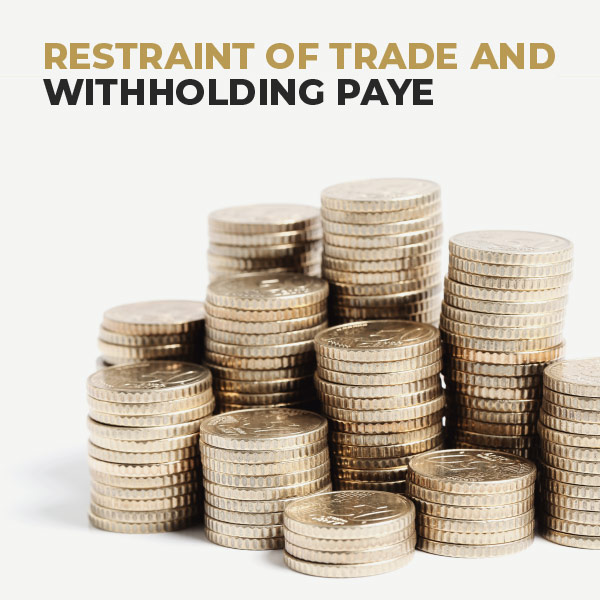RESTRAINT OF TRADE AND WITHHOLDING PAYE
The tax implications of a restraint of trade payment
The law around restraint of trade payments has been made very clear with regard to how these amounts ought to be taxed. Historically, taxpayers endeavoured to structure receipts as restraint payments for tax reasons, as these amounts are capital in nature and thus not subject to income tax. The Legislator intervened many years ago and these amounts are now taxable, even though they are of a capital nature.
This notwithstanding, when these amounts are paid in terms of an employment relationship, both the employer and the employee often overlook the resulting employees’ tax obligations.
What is a restraint of trade?
A restraint of trade arises where a person is compensated for giving up their income-producing capacity, with reference to specified activity, period and/or geographical range. Such a restraint may be imposed where a person sells their business and agrees not to compete with the purchaser, or where an employee leaves their employment they agree not to compete with their previous employer.
Income Tax implications
Paragraph (cB) of the definition of “gross income” in the Income Tax Act No. 58 of 1962 (“the Act”) specifically includes amounts received by or accrued to any natural person as consideration for any restraint of trade imposed on that person in respect of future or past employment or the holding of an office. This specific inclusion makes these amounts taxable as income in the hands of the recipient.
Critically, however, with the specific inclusion, these payments were also included in the definition of “remuneration” in paragraph 1 of the Fourth Schedule to the Act. The result is that your employer (or past employer) must withhold employees’ tax in respect of the restraint payment, and here is where the parties normally fall short of their obligations.
Potentially because the parties have effectively parted ways, they disregard the withholding obligation and the employer pays over the restraint as a single gross amount; or where the payments are staggered, the employer may mistakenly believe there no longer exists an employment relationship and there is no withholding obligation.
Take away
It is important to understand that the amount, whether paid as a lump sum or over a period constitutes remuneration and comes with an employees’ tax obligation. SARS may choose to pursue the employee or the employer where the tax is not withheld correctly.
Where you have received a restraint of trade payment, you may want to check if the tax obligations have been complied with, before the money is spent.
An important starting point for an employee who finds themselves in the predicament described above is to do a tax diagnostic in order to assess and determine the potential tax liability of the taxpayer. From there you must speak to a tax specialist who can assist you in correcting your default without incurring penalties or criminal sanction.
AUTHOR

Rudi Byleveld
Admitted Attorney
![2025-logo-[Recovered] Tax Consulting South Africa](https://www.taxconsulting.co.za/wp-content/uploads/2025/01/2025-logo-Recovered.png)


